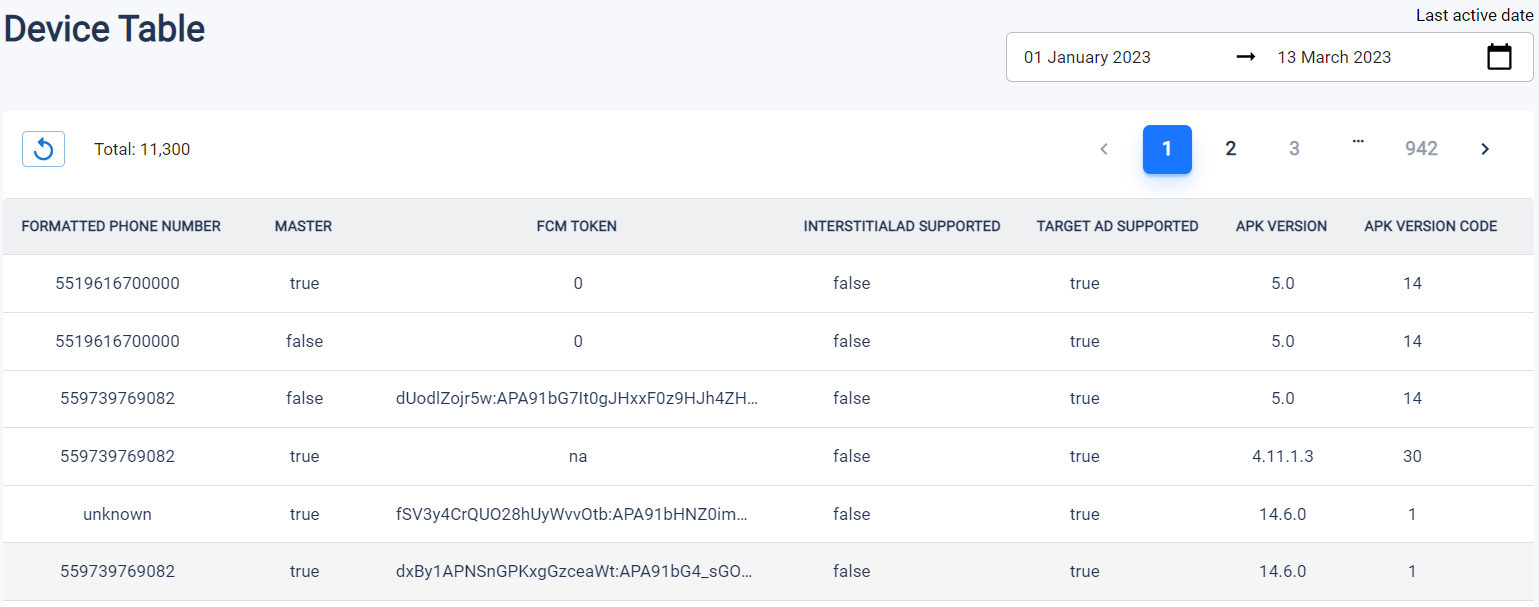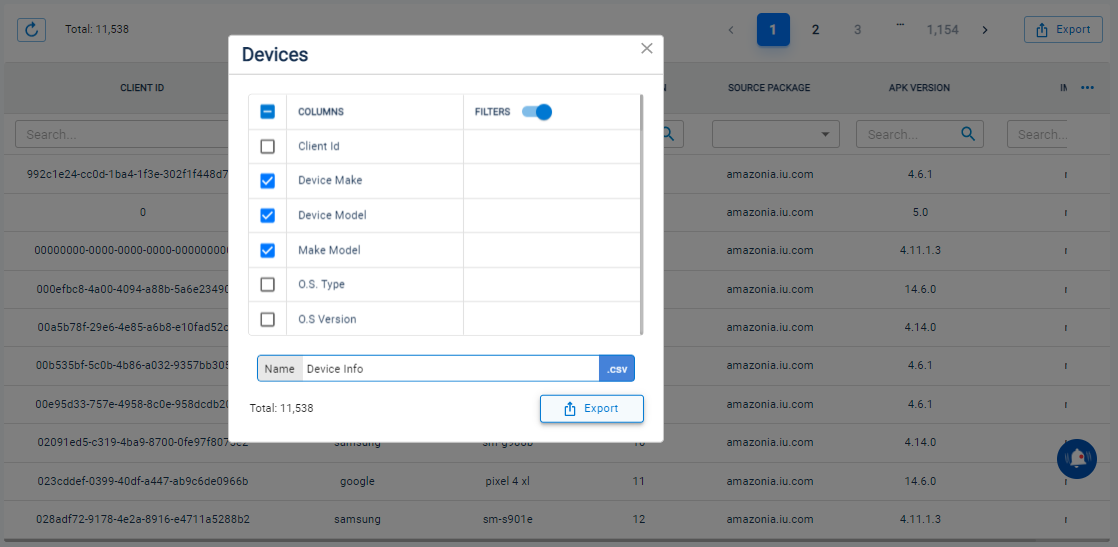Device Table
It is possible to check a list with all of your devices and it informations, all filtered by last connection day and with possibility to filter by timerange. This data is available for download so it can be use for analysis or to create segmentation and reuse into DR1, for example.

In the list of devices, we can see different collumns that should* contain the following information:
- Client id: id that identifies the users' device (deviceId or google_gaid)
- Device Make: device manufacturer
- Device Model: model of the device
- Make Model: Device manufacturer + model
- Device Tier: classification of the device
- Carrier: carrier of the device
- Device Status: status of the device in our SDK
- Phone Number: number collected from the device by the SDK
- Formatted Phone Number: formatted phone number collected from the device
- IMEI No: Unique global identifier for each device associated with SIM Card Slot 1
- IMEI No 2: Unique global identifier for each device associated with SIM Card Slot 2
- Created Date: creation date of the device in DigitalReef database (when the users logged in for the first time in an app with our SDK)
- Modified Date: device modification date in DigitalReef's database (when users log into the app with our SDK)
- Last Active Date: date of last activity on the device
- Source Package: version of the app package
- OS Type: mobile operating system of the device
- OS Version: version of the mobile operating system of the device
- Normalized OS Version: version of the mobile operating system of the device normalized without special characters
- OS Version Code: code of the version of the mobile operating system of the device
- Optin: gives the possibility of showing 3rd party ads
- Monetization Optin: Monetization optin for the app
- Engagement Optin: Engagement optin for the app
- APK Version: Version of the app
- APK Version Code: code of the app version
- Source: source of the app information
- Source Name: app name
- SKD Version: version of the SDK used to collect information
- Normalized SDK Version: version of the SDK used to collect information normalized (without special characters)
- Phone Permission: if there is the permission to read details from the device
- Disclosure Accepted: whether or not the user accepted the permissions requested by the app (app collection clause)
- Location Permission: if there is permission to read location from the device
- Storage Permission: whether or not the user accepted the permissions requested by the app (request for storage permissions)
- Master: If the app is a primary host
- FCM Token: firebase token
- Notification Enabled: If the app has notifications enabled
- Build Variant: SDK variant (ex: if it is preload or not, if it includes applet or not etc.)
- Instance id: random id number to identify the installation instance of the app
- Client Attribute Phone Number: phone number collected from the device by the carrier
- Client Attribute External id: external id sent by the client
- ORG: Organization (publisher of the app)
The user can also select the columns to be displayed in the portal by clicking on the 3 dots located on the upper right side of the table.

*Considering that different APPs may have different permissions, the data captured in the SDK may be different from the list above, due to that, each ORG may show different information on it's Device Table..
It is important to mention that all this data is captured via SDK. This means that the preload apk and applet will have their own device table, organized as submenus of direct install and SAP tools respectively.
Filter and download
All information available in the devices table can be filtered and is available for download, being possible to export according to the filters placed for each column and the days corresponding to the download.
The user has the possibility to select the columns to be exported in the file; to do this, the user only needs to enable the columns required in the download mode, add a name to the file and download it.

When the file is ready to download you will receive a notification in the notification center. It is important to remember that the file link will only be valid for downloading once, after that, a message will be displayed that the link has expired and a new file must be generated.
Updated 10 months ago
